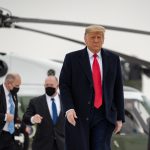It appears that President Trump’s administration is taking decisive steps to reshape U.S. foreign assistance, much to the chagrin of the usual suspects who thrive on sending taxpayer dollars overseas without accountability. The icing on the cake was a recent 90-day freeze on foreign aid, which has sparked howls of outrage from those who live in a bubble of foreign policy illogic. Contrary to the claims of his critics, this review may be just what the doctor ordered to ensure that American money is spent in a way that actually benefits the nation, rather than funding the pet projects of radical groups worldwide.
The president’s critics, including some self-appointed foreign policy experts, have raised their voices in alarm, arguing that cutting off foreign assistance spells disaster. Yet, one must wonder why the same people remained silent when funds were being drained to finance extravagant initiatives like a trans opera in Colombia or a diversity musical in Ireland. Americans are now being told that these frivolous projects are critical to global safety, but fortunately, sensible voices like Daniel Twining from the International Republican Institute are advocating for a more judicious approach to how and where foreign aid is allocated. As it stands, a mere 1% of the federal budget goes to foreign assistance. One might ask if those dollars aren’t being spent more wisely at home.
Abruptly pausing foreign aid assistance impacts the U.S.' ability to leverage bilateral relationships and wastes its technical capabilities and ongoing projects.
🗣️Thomas Carothers warns that this move will alter perceptions of the U.S. abroad.👇https://t.co/IhR8f05iDo pic.twitter.com/IBRzUeycMD
— Carnegie Democracy (@CarnegieDCG) February 7, 2025
Twining, known for his commitment to promoting democracy abroad, highlighted the need for foreign aid to align with U.S. national interests. His sentiments echo a broad conservative belief that aid should not merely be an open-ended commitment to linear “goodwill” but rather a strategic investment in allies that bolster American interests. Interestingly, he addressed the fact that effective aid could prevent violent extremism and mass migration—two things that do not bode well for a nation facing challenges at its southern border. It’s as if these foreign engagement strategies are a double win: they help freedom-loving countries grow while keeping the worst of the world’s problems—like terror and mass movements—at bay.
It’s rather amusing that while Democrats and their allies oppose this freeze, they remain blissfully unaware of the mismanagement rife in organizations like the U.S. Agency for International Development. Reports of squandering money on ridiculous projects rather than directing it where it can actually make a meaningful impact have made many question the entire enterprise. The notion that American taxpayers should be on the hook for extravagant international feel-good projects while their own communities struggle is a concept that just doesn’t sit right with a conservative audience.
When examining the Trump administration’s focus on curbing foreign influence from entities like China and Iran, one can see a clear strategic vision where U.S. aid acts as a tool for defense rather than a handout. Countries like Iran are reportedly itching for assistance to galvanize democratic movements, and the administration recognizes that this is a crucial window of opportunity to strike while the iron is hot. If the Iranian people earn a say in their own governance, it could potentially unravel a massive security threat for the United States and its allies—even reducing the constant turmoil in the Middle East.
In sum, the Trump administration’s foreign policy shift is not just about slashing aid but reassessing its purpose. Critics may want to raise alarm bells, but in reality, a closer examination reveals a potential path to fostering strong, democratic alliances among countries that genuinely align with America’s ideals. Instead of fear-mongering, maybe it’s time for a little less drama and a little more common sense when it comes to U.S. foreign aid.




